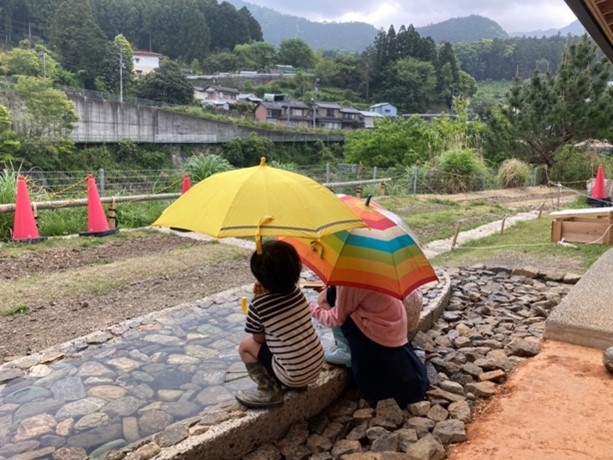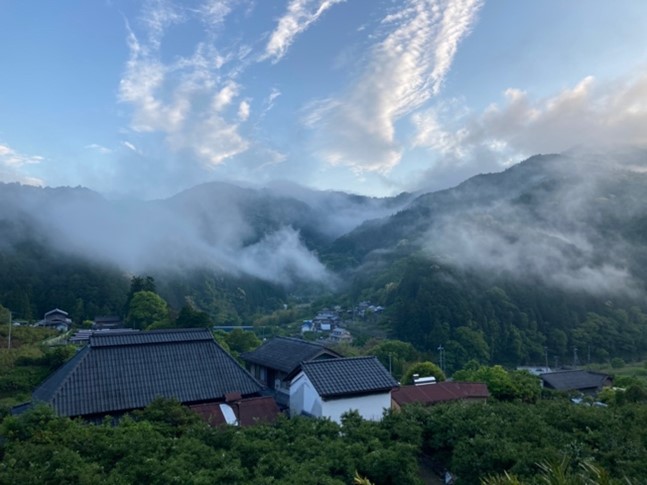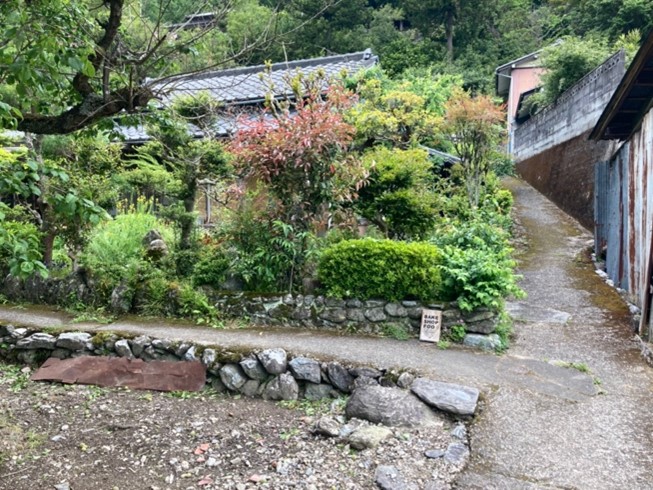by Susanne Klien*
Hi from Hokkaido! I recently wrapped up my follow-up fieldwork in Tokushima Prefecture. Originally scheduled for 2020, I had to postpone it because of the pandemic. In spring 2021, the infection rates seemed low enough in Kamiyama, a town with 5000 residents in the mountains. However, the decision to go ahead was difficult since my place of living, Sapporo, had high rates of infection, at times outnumbering Tokyo. Also, like most rural places, my field has an extremely high rate of residents older than 65 (50%). A close contact in town warned me that it may be difficult to pursue conventional fieldwork as many events have been cancelled and individual attitudes to the virus vary. Yet, he also shared that there were non-local visitors and some residents went on business trips. I eventually decided to go ahead, but also felt that extreme caution was required as not to risk anyone’s health including my own. Wearing a FSC.F-99 mask at all times, prioritizing outdoor activities and interviews was basic fieldwork etiquette.

Copyright © Susanne Klien 2021
During the first five days after my arrival I kept my activities low key, focusing on archival work. In contrast to my worries before departure, I felt my fear of catching COVID-19 dwindle every day – more pressing worries were how to cope with centipedes, giant spiders and heavy pollen exposure. Apart from a few public places that required measuring one’s body temperature, it was almost as if the virus did not exist. Some elderly neighbors who came for a chat were not even wearing masks. A local lady in her 70s whom I interviewed at her house said that I did not need to wear my mask during our conversation. Among the dozens of urbanite settlers I interviewed, only one asked me whether I had taken a PCR test.

Copyright © Susanne Klien 2021
That being said, however, there have in fact been a few infections in town. I talked to a settler in her late 20s who caught the virus, having brought it from outside. She said that even after her recovery, she was told by a shop owner to keep away. Social stigmatization has been reported as a huge issue in rural places that seems to outweigh the low risk of catching the virus there.
Most of my interviewees from four years ago were still in town, even those who had stated that they may move to other places. Check out my recent monograph Urban Migrants in Rural Japan: Between Agency and Anomie in a Post-growth Society (Albany, NY: SUNY Press 2020) if you are interested in their stories. Some collaborators have started entrepreneurial activities – in fact, my accommodation was a guesthouse opened by one of my interviewees, a woman from the Tokyo area in her early 30s.

Copyright © Susanne Klien 2021
Others were still searching for their ideal lifestyles, just like four years ago. It was reassuring to see so many familiar faces, yet it was all so different. There were many new arrivals. Having featured widely in various media, Kamiyama has gained a reputation as a place for fashionable individuals with special skills: designers, chefs, creatives, IT engineers.

Copyright © Susanne Klien 2021
Some long-term migrants observed that these newcomers are not really interested in deeper engagement with the local community; they just want to realize themselves by pursuing activities that make sense to them.
The pandemic seems to have legitimized the lifestyle choices of migrants as rural life as strategic both with regard to infection rates and food access. A couple in their 30s who have lived in Kamiyama for six years joked that their parents in Tokyo had always questioned their decision to leave their corporate jobs until the pandemic, when all of a sudden, they were praised for having made the right choice.
With inquiries about relocation having increased notably since the pandemic, Kamiyama – and many rural towns – have clearly seen a rise in interest by individuals from all walks of life.
*Susanne Klien is associate professor at Hokkaido University. Her main research interests include the appropriation of local traditions, demographic decline and alternative forms of living and working in post-growth Japan. She is the author of Urban migrants in rural Japan: Between agency and anomie in a post-growth society (State University of New York Press, 2020).
